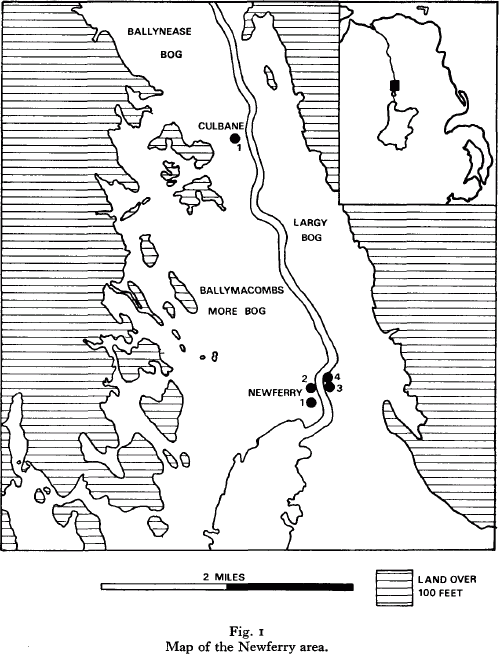Article contents
Recent Excavations at Newferry, Co. Antrim
Published online by Cambridge University Press: 27 May 2014
Extract
The Newferry area is situated to the north of Lough Beg which is almost a northern extension of Lough Neagh, in Co. Antrim, Northern Ireland. Newferry is not a precise geographical area; it lies on both the Antrim and Derry side of the River Bann, and is an extensive area of diatomite flats nearly one mile wide which is bounded to the east and west by the drumlins lining either side of the valley. In early post-glacial times this would have been an extension to Lough Beg and until the Bann was dredged in the 1930's it was still liable to flood during the winter months. On the northern edge on the western side of the river the diatomite is known to run under the edge of Ballymacombs More raised bog. Therefore this lacustrine basin may have extended for another two miles north to Culbane where the high ground of Ballynease would have partially separated it from the next lake basin (fig. 1).

Newferry has long been known as an area where Mesolithic material could be recovered from the Quaternary deposits. Several other excavations have taken place in this area prior to the present excavations. The Harvard Archaeological Mission carried out an excavation on the Derry side of the river in the early 1930's (Movius 1936) while in the late 1950's another small investigation was carried out on the Antrim side of the River (Smith and Collins 1971). In total there are now four sites known in this area.
Information
- Type
- Research Article
- Information
- Copyright
- Copyright © The Prehistoric Society 1977
References
REFERENCES
- 31
- Cited by

